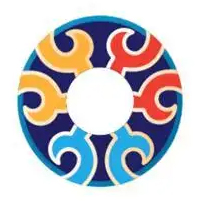Découvrez la beauté des arts et métiers chinois - Collier de perles avec cloisonné
01 Cloisonné : Un trésor national
Cloisonné, formally known as 'copper base wire inlay enamel' and commonly known as 'enamel', is also known as 'inlaid enamel'. It is an object made by putting various patterns made of soft flat copper wire on a copper base and then filling it with enamel glaze and firing it. It is named 'Cloisonné' because it was popular during the Jingtai period of the Ming Dynasty and the craftsmanship was quite mature. The enamel glaze is mostly blue, hence the name 'Cloisonné'.
During the Ming and Qing dynasties, emperors had specialized institutions to produce metal cloisonné for imperial use. From the Xuande and Jingtai periods of the Ming Dynasty to the Kang, Yong, Qian, and Jiaqing periods of the Qing Dynasty, Cloisonné was produced. This made Cloisonné one of the 'Four Famous Actors' in Beijing's arts and crafts, and it was also included in the 'Eight Marvels of Yanjing'.
02 Amendes aux enchères: un pièce de Cloisonné, dix boîtes de porcelaine de four officielles.
Cloisonné is made of precious materials and the craftsmanship is extremely difficult. It is the only art category that is not shared by officials and the public, and it is exclusively for the emperor's enjoyment. Most of the Cloisonné objects are collected in the Palace Museum, with only over 6,000 pieces, which is a small part of its important collection. This is enough to prove the value and rarity of Cloisonné.
S'il n'y a pas de cloisonné dans la collection, même si tous les autres trésors du monde sont collectés, cela est vain.
03 Ornements fins: charme antique, parfumé et coloré.
Le cloisonné comprend non seulement des bouteilles, des assiettes, des bols, des brûleurs d'encens, des boîtes rondes, des porte-encens et des tripodes, mais aussi des pots de fleurs, des lavabos, des pots de charbon, des lampes, des porte-bougies, des pots et plus encore. Que ce soit à l'intérieur ou à l'extérieur, le cloisonné peut apporter un charme antique, un parfum et une couleur uniques.
04 Processus de fabrication : Précis et magnifique
Le processus de fabrication du cloisonné peut être résumé en sept étapes : création de la base, pliage du fil, soudure, pointillage, cuisson, polissage et dorure, chacune impliquant de nombreux détails. L'émail est fabriqué à partir de minéraux naturels tels que l'agate, le lapis-lazuli et la turquoise, dont certains sont même estimés à des dizaines de milliers de yuans.
Dotting is one of the most magical aspects of making cloisonné. The design patterns do not indicate colors, they are all in the mind of the dotting master. Dotting is not done all at once, it also requires firing, known as "firing the glaze", and each dotting needs to undergo a firing process until the glaze is consistent with the wires, which signifies completion.
Après le décapage, le dégraissage et le polissage au sable, le cloisonné est doré, ce qui permet à l'or d'adhérer à l'embryon métallique, améliorant la luminosité et la protection.
05
Cloisonn inherits the solidity of bronze ware, the gorgeousness and dazzle of porcelain, and the meticulousness of painting skills. It used to be known as 'court art' and has now become intangible cultural heritage. Cloisonn is not just an exquisite object but also represents the wisdom and wonder encapsulated in ancient and rare Chinese craftsmanship.

